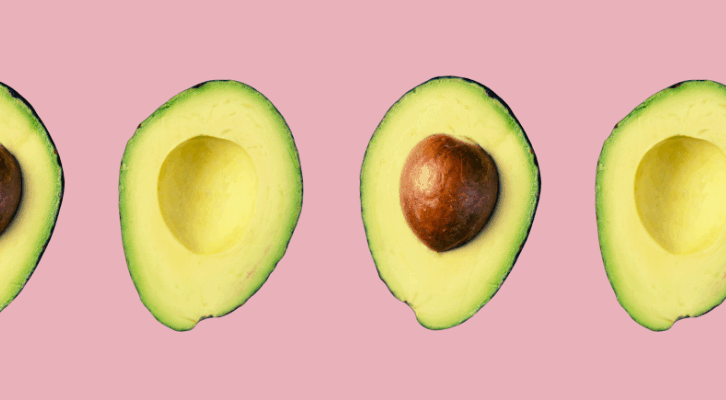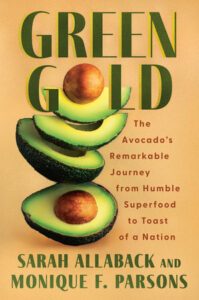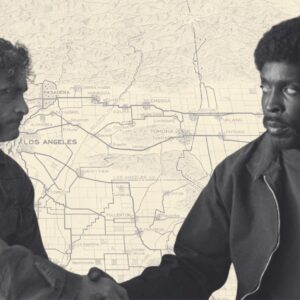
Why Are We So Obsessed With Avocados?
Sarah Allaback and Monique F. Parsons Track the Evolution of America's Fixation
Why are avocados everywhere?
As childhood friends growing up in Carpinteria, California, in the 1970s and ’80s, we saw avocados every day. They were just as much a part of the “Carp” landscape as the beach town’s famous surf break. We assumed it had always been that way. Orchards blanketed the hillsides behind town, and significant hours of our childhoods were spent exploring the Parsons’ avocado farm— crunching through the fallen leaves, playing beneath shady canopies, and climbing among smooth branches. It was only after leaving home and heading east for college that we recognized just how much we had taken for granted. Avocados were part of what we left behind.
Even in the 1980s, many Americans had never seen an avocado, much less tasted one. Over the decades, the fruit gradually became more common in supermarkets nationwide. Seemingly overnight, they went from occupying a small display in the “exotic” section at specialty markets to being everywhere. They appeared in New York City bodegas, midwestern megastores, health food stores, and delis. Nearly every grocery store in the United States sold avocados, almost always the Hass variety, with its black pebbly skin, rich flavor, and medium-sized pit. Hass avocados are now on the menus of Mexican restaurants, sushi bars, Korean coffee shops, pricey gourmet restaurants, and fast-food chains. Avocado toast has appeared at Dunkin’ Donuts and mom-and-pop restaurants in all fifty states. Before Cinco de Mayo 2020, in the early days of a deadly pandemic, a social media campaign promoting Mexican avocados generated 6 billion impressions. In 2023, Americans ate close to 3 billion pounds of avocados, tying a record set in 2021. Some analysts predict that by 2030, the average American will eat more than eleven pounds of avocados a year.
We discovered a history of avocado frenzies that paved a way for our own, spurred on by a tight-knit group of avocado pioneers—midwesterners, Californians, and Mexicans.
Strikingly, Americans’ obsession with the avocado goes beyond food or nutrition. Avocado merchandise is sold everywhere, too—from museum gift shops and highway rest stops to Etsy and Neiman Marcus. Products feature avocados in many guises: friendly-looking cartoons, often of half avocados with round or heart-shaped pits, some transformed into cats, or Santa Claus, or breasts. They grin. They pose. They wear sunglasses, tiny hats, wide sombreros, or sweatbands. Some smoke and hold beers. Several wrap their arms around toast. Many sport mottos like “let’s avocuddle” and “avocado addict.” Those suffering from that affliction can buy avocados shipped directly from California farms or find thousands of avocado-themed items to satisfy cravings. Among the most unusual is a Taco Tuesday baby set with a lemon-lime plastic teether and an avocado-shaped rattle. One online store sells a T-shirt with an image of the Virgin Mary, her face replaced by a severed avocado. The caption reads: “Our Lady of Guacamole.”
Carpinteria rode the wave and capitalized on the avocado’s fame. In 1987, our hometown launched the California Avocado Festival. The event draws tens of thousands annually to shop, eat, and celebrate avocados while strolling down palm tree-lined avenues. The festival brings the community together: the high school cheer squad makes vats of guacamole, community clubs sell avocado sandwiches, and local businesses offer avocado-chocolate truffles and avocado ice cream. Farmers from across the region come to town to demonstrate grafting and sell rare avocado varieties. The organizers mount a historical display with photographs from the early days and use profits to fund civic programs. With three stages featuring a rotating lineup of performers, it’s evolved to the largest free public music festival in the state, all in honor of the avocado.
Despite its festive image, the avocado’s fame has a sinister side. Images of decaying, bloody, and bullet-ridden avocados, avocados reimagined as grenades, and avocados on arid landscapes or de-forested mountainsides appear on media sites. These images often illustrate articles about the 200,000 American-made guns that make their way into Mexican drug cartels’ arsenals each year. Sometimes the message is about the climate crisis, corrupt or inept politicians, or Americans’ insatiable greed. Bruised and browning avocados become stand-ins for lost youth, poverty, deception, or death.
How did a regional staple from Latin America come to occupy such a central spot in American culture? Why has the avocado become a meme—outshining popular fruits like grapes and bananas—representing individuality and healthy living? And why is it also used as a symbol for all that’s gone wrong? These questions led us to wonder about the people behind the product, those who propelled the avocado into our diets and our consciousnesses and who made it an international icon.
The story goes back more than a hundred years. To track it down, we visited nurseries and laboratories, walked through acres of orchards, and spoke with people from six continents. We discovered a history of avocado frenzies that paved a way for our own, spurred on by a tight-knit group of avocado pioneers—midwesterners, Californians, and Mexicans—who fought (sometimes with one another) to get an industry off the ground. Among them were explorers and spies, entrepreneurs and scientists, university professors and railroad tycoons, marketing geniuses and savvy salesmen. Their passionate quest for the perfect avocado and the ensuing battle for its marketplace depended on the branches of two trees that launched the avocado industry: the Fuerte and the Hass. Across borders, decades, drought, pestilence, the Mexican Revolution, and two World Wars, the Fuerte made the avocado an affordable, nationally known fruit. In time, Hass eclipsed it in spectacular fashion. Green Gold is the story of two trees and the people who nurtured them, for money and love.
__________________________________

Excerpted from Green Gold: The Avocado’s Remarkable Journey from Humble Superfood to Toast of a Nation by Sarah Allaback and Monique F. Parsons. Copyright © 2025 by Sarah Allaback and Monique F. Parsons. Reprinted by permission of Counterpoint Press.
Sarah Allaback and Monique F. Parsons
Sarah Allaback is an author and historian specializing in architectural and landscape preservation. She grew up in Carpinteria, California and lives in Amherst, Massachusetts.
Monique F. Parsons is a journalist, an award-winning audio producer, and an avocado farmer. A native of Carpinteria, California, she lives in suburban Chicago.



















